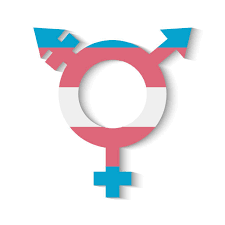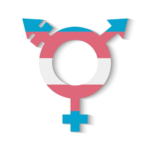When it comes to understanding how our bodies develop, hormones play a significant role—especially estrogen, often dubbed the "female hormone." While many associate estrogen with breast growth, the relationship isn’t as straightforward as one might think. This article aims to dissect the connection between estrogen and breast development, exploring various facets such as puberty, genetics, and even the role of supplements.
Understanding Estrogen: The Hormone Behind Breasts
Estrogen is a key hormone in the female body, primarily produced in the ovaries. It plays a crucial role in the development and regulation of the female reproductive system and secondary sexual characteristics, such as breasts. This hormone promotes the growth of glandular tissue in the breasts during puberty and pregnancy, contributing to the formation of breast tissue. Essentially, estrogen is one of the main players in making breasts develop during a person’s growth.Ftm Clitoris Growth
However, it’s important to note that estrogen is not the only hormone involved in breast development. Progesterone, another essential hormone, also significantly contributes to breast growth and differentiation. The interplay between these hormones creates a complex network that governs how breasts grow and change throughout different life stages.
How Estrogen Affects Breast Development Over Time
Breast development is not a one-time event; it’s a process that evolves through various life stages. During puberty, estrogen levels rise, leading to the growth of breast tissue and the appearance of breast buds. This is often the first visible sign of puberty in girls, signaling that their bodies are beginning to mature. As estrogen levels fluctuate throughout a person’s life, so too does breast tissue, which may expand or contract based on hormonal changes.
As women age, estrogen levels naturally decline, especially during and after menopause. This decrease can lead to changes in breast size and shape, often causing breasts to become less full and more saggy. Understanding this lifecycle of estrogen’s influence on breast development helps illustrate that breast size can change over time due to varying hormonal levels.
The Role of Genetics in Breast Size and Shape
While estrogen is influential, genetics is a huge player in determining breast size and shape. Each person inherits a unique genetic blueprint from their parents, which includes traits that can influence breast development. Studies show that breast size can often run in families, meaning that if your mother or sisters have larger or smaller breasts, there’s a good chance you might too.
Moreover, genetic factors can also determine how responsive breast tissue is to estrogen. Some individuals might have receptors that are more sensitive to hormonal changes, resulting in more pronounced breast development compared to others. In this sense, genetics and hormones work hand in hand to shape individual breast characteristics.
Estrogen and Puberty: What Happens to Your Body?
During puberty, the body undergoes a whirlwind of changes, and estrogen is at the center of that storm. For many, this period begins around the age of 10 to 14, when estrogen production kicks into high gear, leading to the development of secondary sexual characteristics, including breast growth. The increase in estrogen levels causes the ducts and lobules in the breasts to expand and mature, leading to fuller breasts.
This breast development can occur in varying degrees—some individuals may experience significant growth, while others may have a more modest change. It’s all part of the natural variability of puberty, influenced by hormonal changes, genetics, and even environmental factors. Understanding this can help normalize the diverse experiences people have during this transformative time.
Can Estrogen Supplements Change Your Bust Size?
The idea of using estrogen supplements to enhance breast size is a common topic of discussion, but the reality is a bit more complex. While estrogen can indeed promote the growth of breast tissue, taking supplements without medical supervision can lead to a host of side effects. Many individuals seek these supplements in the hopes of achieving fuller breasts, but results can vary widely.
Moreover, using estrogen supplements can disrupt the body’s natural hormone balance, leading to potential health risks. For anyone considering this route, it’s crucial to consult a healthcare provider first. They can offer guidance on whether hormone therapy is appropriate and safe, taking into account individual health needs and goals.
Myths vs. Facts: Estrogen and Breast Growth Explained
With so much information (and misinformation) circulating about hormones and breast growth, it’s easy to get lost in the myths. One common myth is that simply increasing estrogen levels through diet or supplements will lead to a dramatic increase in breast size. While estrogen plays a role, breast growth is also influenced by other factors, including genetics and overall body composition.
Another myth suggests that all women will experience significant breast growth during puberty. The reality is that breast size varies greatly among individuals, and not everyone will experience the same degree of change. By debunking these myths, we can foster a better understanding of the factors that truly contribute to breast development.
What Other Factors Influence Breast Size and Growth?
While estrogen is a vital component, several other factors influence breast size and growth. Weight fluctuations, for example, can significantly impact breast size since breast tissue is partly composed of fat. Gaining weight may lead to an increase in breast size, while losing weight can have the opposite effect. Similarly, lifestyle choices such as diet and exercise can also play a role in how breasts develop over time.
Other factors include hormonal fluctuations associated with menstrual cycles, pregnancy, and breastfeeding. During pregnancy, for instance, the body produces higher levels of estrogen and progesterone, leading to fuller breasts in preparation for nursing. Understanding these various influences can provide a more comprehensive picture of what affects breast size and growth.
FAQs: Common Questions About Estrogen and Breasts
Q: Does estrogen cause breast cancer?
While estrogen itself does not directly cause breast cancer, prolonged exposure to high levels of estrogen may increase the risk. This is why monitoring hormone levels and discussing risks with a healthcare provider is so important.
Q: Can men develop breasts from estrogen?
Men can develop breast tissue in a condition known as gynecomastia, which can be influenced by hormonal imbalances, including excess estrogen or low testosterone levels. It’s essential for men experiencing this to consult a medical professional for a thorough evaluation.
In summary, while estrogen is crucial for breast development, it’s just one piece of a much larger puzzle. Genetics, age, lifestyle choices, and even hormonal balance all play vital roles in shaping breast size and growth. Understanding these factors helps demystify the connection between estrogen and breasts, empowering individuals to make informed choices about their health and bodies. Whether you’re navigating puberty, considering supplements, or simply curious about the changes in your body, knowledge is key!


